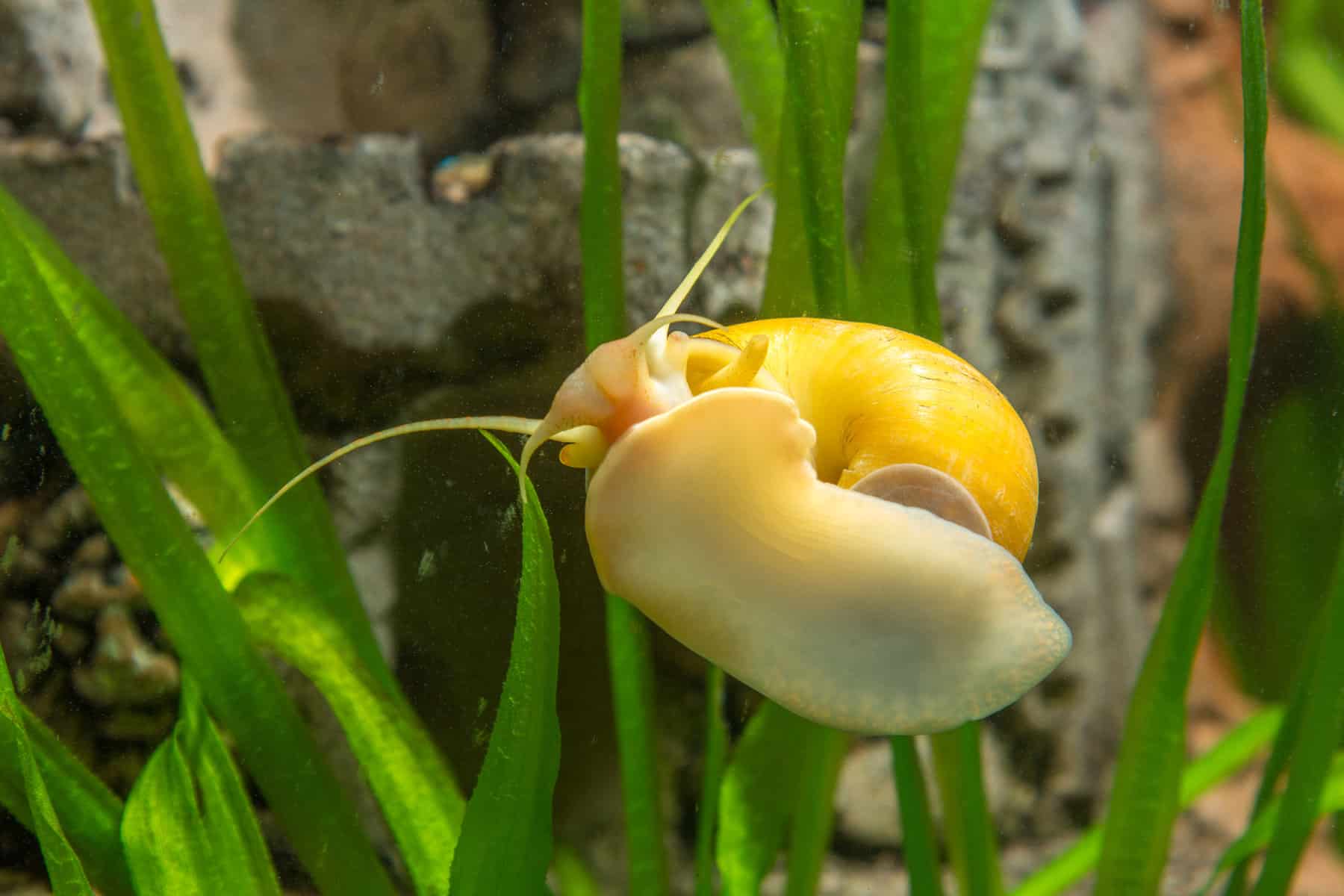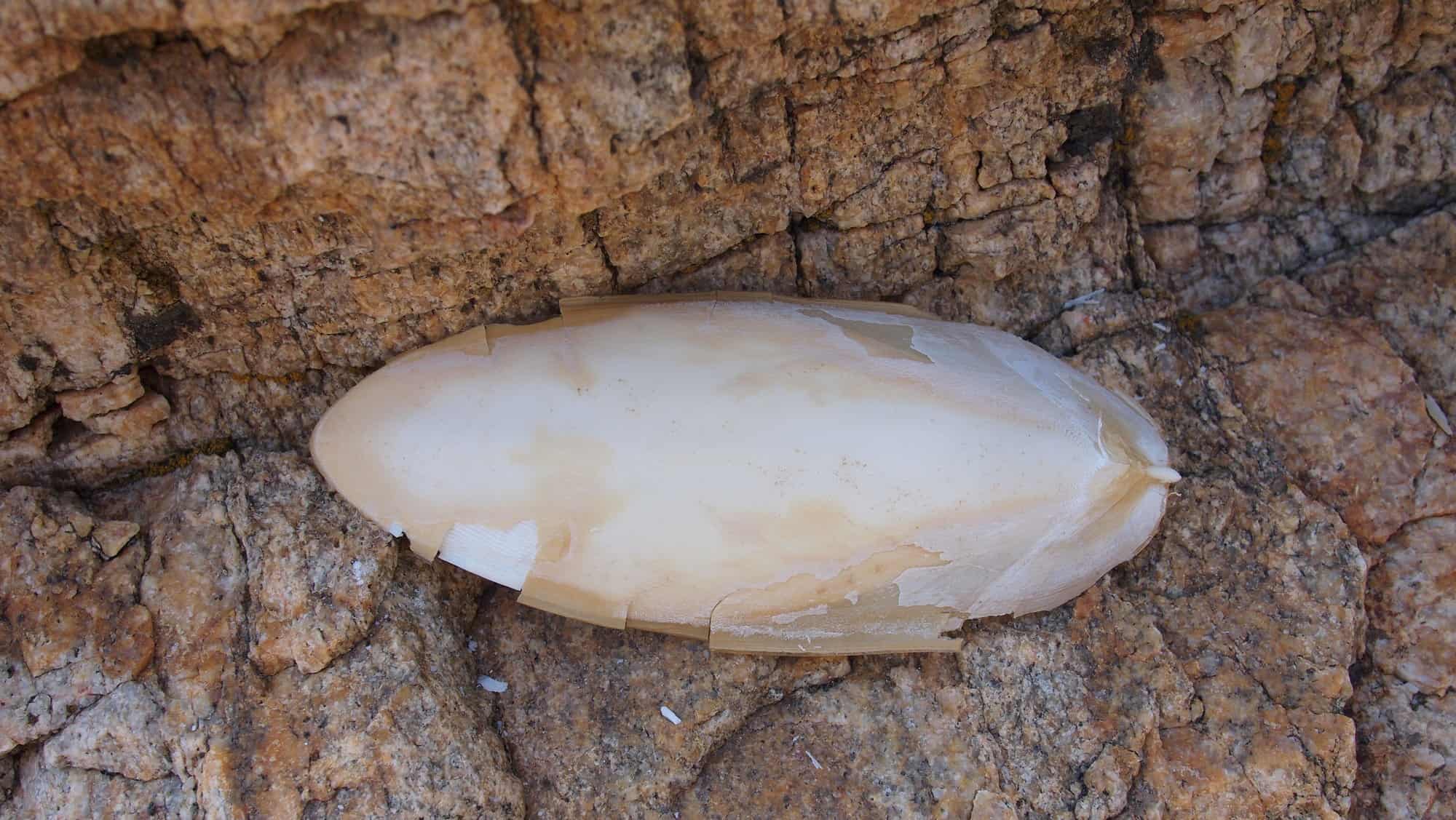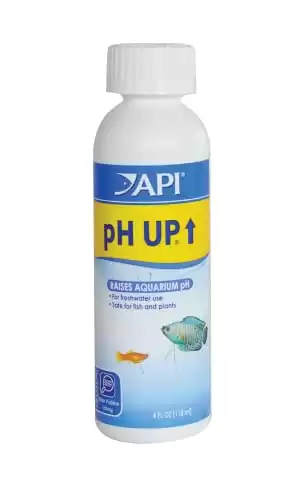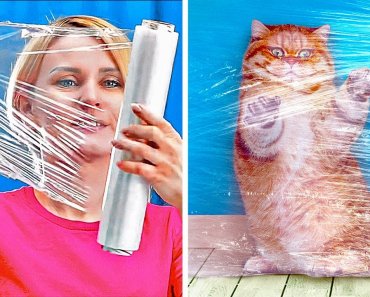We all know cuttlebones are good for parakeets, but snails? Yes! Aquarium snails such as mystery snails, nerite snails, and rabbit snails can all benefit from having cuttlebones in their tank.
Cuttlebones are not only a healthy snack for these pet invertebrates, but they can also help adjust the water parameters to favorable conditions for your snails to thrive.
But where exactly do cuttlebones come from, and how should you use them to improve the lives of your snails? Let’s find out…
What Are Cuttlebones?
Cuttlebone, also sometimes known as cuttlefish bone, is the internal shell of a cuttlefish, a cephalopod cousin of octopus and squid.
As a functioning part of cuttlefish anatomy, its microscopic hollow channels are filled with gas for buoyancy control. Cuttlebones are harvested from dead cuttlefish as a by-product from the fishing industry and are often sold to the pet trade.
Most well-known as a calcium-rich dietary supplement for caged birds, cuttlebones can also be given to small mammals, aquarium crabs, shrimp, and snails.
Although they were previously processed as an ingredient for toothpaste, cuttlebones are not intended for human consumption!
What Are Cuttlebones Made From?
Cuttlebone is composed mostly of 85% aragonite, a natural crystal form of calcium carbonate (CaCO3), and 8.9% organic matter, consisting mostly of carbohydrates.
Why Are Cuttlebones Good for Snails?
The high proportion of calcium carbonate in cuttlebones makes them useful for snails in several ways.
As you may know, snail shells are made up of 95-99% calcium carbonate, so they need plenty of calcium in their diet to keep their shells strong and healthy.
Secondly, cuttlebones can alter the aquarium water chemistry in favor of your snails. Snails tend to prefer neutral to alkaline water that is medium-hard. When cuttlebones are added to soft, acidic water, they begin to dissolve, thus raising the GH, KH, and pH of the water.
Cuttlebones as a Dietary Supplement for Snails
Just as canaries and parrots can benefit from the additional calcium obtained from eating cuttlebones, so can your snails.
Since a snail’s shell is made almost exclusively from calcium carbonate, it can greatly benefit from feeding from a skeleton that is made of the same material. Having enough calcium in their diet helps your snail’s shell to grow strong and hard without deformations.
Snails have an excellent sense of smell, so a cuttlebone in your tank will quickly attract snails that need a little extra calcium nourishment. You can then enjoy watching your snails munching away at this nutritious treat.
Some snail owners like to feed their snails cuttlebone as a treat, to keep their snails feeling happy and well-cared for, but they can be fed over longer periods of time too.
Using Cuttlebones To Raise GH
GH stands for general hardness and is chiefly determined by the amount of dissolved calcium and magnesium in the water. If your tap water is particularly soft, it may have a lower GH than your snails would prefer.
As an example, nerite snails prefer a GH of 8-18 dGH. If your aquarium water is less than this, you can use cuttlebone to raise the GH and ensure enough dissolved calcium to keep them happy.
How Cuttlebones Raise KH
KH stands for carbonate hardness and is the measure of the dissolved carbonates and bicarbonates in the water.
When the calcium carbonate bones of cuttlefish dissolve, they release both calcium and carbonate into the water, with the carbonate portion raising the KH towards your snail’s liking.
For example, mystery snails prefer a KH of 12-18 dKH. If your aquarium water tests as being only 9 dKH, you could use a cuttle shell to increase the KH to at least 12 dKH.
Using Cuttlebones To Raise pH
Aquarium snail species tend to prefer a water pH of between 7-8, or sometimes even higher.
Acidic water of less than pH 7 can begin to erode your snail shell, making it softer and more brittle, so for the well-being of your snail, neutral-alkaline water is strongly recommended.
If your water is acidic, cuttlebones are placed in the water to raise the pH. As their shells dissolve, the minerals released will make the water significantly more alkaline, thus creating a friendlier environment for your snails.
The Limits of Cuttlebone’s Effect on Water Chemistry
According to my research, cuttlebones will dissolve in water with a pH of up to 7.8. After that, the water in your fish tank won’t have the necessary acidity to dissolve your cuttlebone any further, thus stopping any further effect on the water chemistry.
Luckily pH 7.8 is a good pH level for every type of aquarium snail that I know of, so there’s no reason to raise it any further. At pH 7.8, the GH and KH of your water should also be at sufficient levels for your snails.
Test your water regularly to find out what effect your cuttlebone is having on your water chemistry. If the rise in pH plateaus out at around 7.8, then adding more cuttlebones won’t help, the water has simply reached its maximum pH from this method.
If for some reason you want to raise your pH even further, you’ll have to turn to specialized aquarium products like API pH Up or crushed coral to do that.
Do All Snail Tanks Need Cuttlebones?

While all snails will benefit from being kept in water with a neutral alkaline pH and adequate calcium levels, there is some variation between species. Where I grew up, our water was soft and acidic, barely reaching pH 6, but our pond was still full of pond snails.
But other species of snails from other parts of the world may have a stricter requirement for alkaline conditions. Nerite snails, for example, strongly prefer alkaline water, with some aquarists even keeping them at pH 8 and above.
Check the preferred water parameters of your particular species of snail and compare it with your aquarium water to find out if it’ll be beneficial to use cuttlebones or not.
Can I Powder My Cuttlebone for Snail Food?
Yes! Cuttlebones can be ground up and mixed with other types of snail foods such as fish food, algae wafers, or blanched vegetables to help meet your snail’s calcium demands.
To do this, use a pestle and mortar or a robust food processor to grind or blitz your cuttlebone into tiny pieces. If some of the pieces don’t get eaten, don’t worry – they will float away and may have a positive effect on your water chemistry anyway.
Since cuttlebones are mostly inorganic, small amounts won’t foul your water like other types of uneaten food can.
How Long Can I Keep a Cuttlebone in My Snail Tank?
After a month or so, your cuttlebone may begin to dissolve and break up. At this point, you can either let it continue to disintegrate in your tank, or remove it, and this depends a little on your tank’s inhabitants.
While dissolved calcium carbonate in the water is not normally a problem, the small amount of carbohydrates in the shell could foul the water if allowed to rot indefinitely.
Snails are fairly robust pets and are not so sensitive to water quality, but, if you keep fish, it may be better to remove the cuttlebone after a month to prevent ammonia spikes or bacterial infestations that could risk their health.
Alternatives to Cuttlebone for Water Chemistry

As I mentioned, there are some alternatives to cuttlebone for altering your tank’s water chemistry in favor of your snails.
Commercial aquarium products such as API pH Up can be carefully applied at the prescribed doses to raise the pH in a controlled manner. Some people also use small amounts of bicarbonate soda (baking soda) for the same effect.
- Contains one (1) API pH UP Freshwater Aquarium Water pH Raising Solution 4-Ounce Bottle
- Raises freshwater aquarium water pH with a phosphate-free formula
- Does not promote algae growth with pH adjustments and is safe for plants and fish
- Slowly neutralizes acidic substances that cause low water pH
For a more gradual effect, excellent natural sources of calcium carbonate such as limestone, crushed coral, egg shells, and wonder shells can be used in a similar way as cuttlebones.
Unlike cuttlebones, the alkalizing effect of some of these calcium sources won’t stop at pH 7.8, so it’s a good idea to test your water regularly to make sure you’re not overdoing it!
Remove Driftwood and Sources of Tannins to Increase pH
Another way to make your water less acidic is to remove any sources of tannins.
Driftwood, dead tree leaves, and the peat contained in some aquarium soils all contain tannins that dissolve and make your aquarium water golden brown and more acidic.
While this can be a beneficial effect for some species of fish, snails don’t do well in acidic water, so it’s best to remove any tannin sources if you wish to raise your tank’s pH.
Can Snails Feed From a Floating Cuttlebone?
That depends a bit on the species. While some snails such as mystery snails can often be found floating around at the surface of the tank, other snails rarely float and spend most of their time scouring the bottom of the tank and glass for food.
Snails that like to float are more likely to find a floating cuttlebone and start eating it, but to make sure your cuttlebone is more accessible to all of your snails you might need to sink it!
How Can I Sink a Cuttlebone?
If you leave your cuttlebone alone for several days, it will fill with water and begin to sink, but you may not want to wait that long.
To sink a cuttlebone immediately, simply place it in a large saucepan and boil it for a few minutes until it sinks. Wait for it to cool down and add it to the tank.
Alternatively, you could anchor down a fresh cuttlebone under a rock or heavy aquarium ornament.
How Can I Clean a Cuttlebone?
Some aquarists also like to clean their cuttlebones, using the boiling method given above before adding it to their tank. Thorough boiling will kill any bacteria or pathogens residing inside your cuttlebone, and since it helps it sink too, boiling is a win-win!
Tips for Using Cuttlebones With Snails
Check pH, GH, and KH Levels Regularly
If you’re using cuttlebone to make your water alkaline, it’s a good idea to test your water often – at least once a month – to see if it’s having the desired effect.
Using a reliable test kit such as the API Master Kit will give you much more accurate readings than the very approximate ‘test strips’.
Diversify Their Diet
While cuttlebones will provide your snails with an excellent source of calcium, there are many other nutrients your snails need to remain healthy and happy.
If there is not sufficient algae growing in your aquarium, be sure to offer your snails plenty of algae wafers – they’re a wonderful source of proteins and minerals that your snails need.
Snails will also enjoy eating up the remains of fish food that your fish don’t eat, but make sure that all fish foods get completely consumed within half an hour of adding them to the tank since decaying fish food is a major cause of poor water quality and ammonia poisoning.
Feeding Shrimp and Crabs Cuttlebones
Along with your snails, there are other aquatic invertebrates that might enjoy the alkalizing effect and excellent calcium source that cuttlebones provide.
Aquarium shrimps such as ghost shrimps, cherry shrimps, and Amano shrimps, and freshwater crabs such as Fiddler crabs and red claw crabs love cuttlebones for many of the same reasons that snails do.
It helps their shells to grow harder, their bodies to grow faster, and their water to remain within the right parameters. It may also help them to lay healthy, fertile eggs.
Conclusion
Adding cuttlebones to snail tanks offers several benefits. Not only do they help your snails get the dietary calcium they need to thrive, but cuttlefish bones can also shift the pH, GH, and KH of your aquarium water to the preferred range of your snails.
To learn more about how to look after the many different types of aquarium snails, read our detailed guide to freshwater snails here.



![[Review + Giveaway!] Wishbone Grip – Easily Open Tricky Plastic Bags #ad [Review + Giveaway!] Wishbone Grip – Easily Open Tricky Plastic Bags #ad](https://petsforchildren.com/wp-content/uploads/2021/09/review-giveaway-wishbone-grip-easily-open-tricky-plastic-bags-ad-370x297.png)























